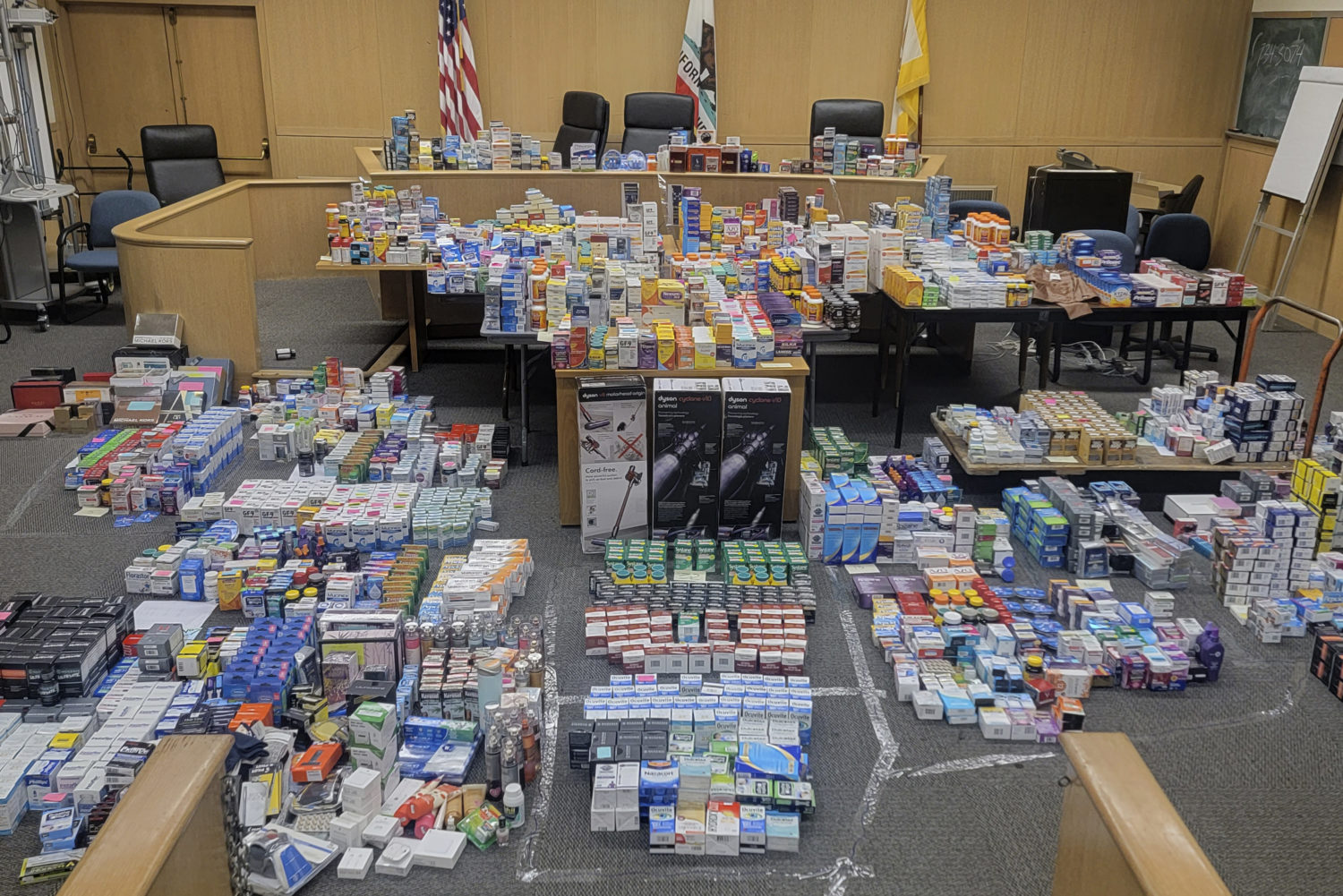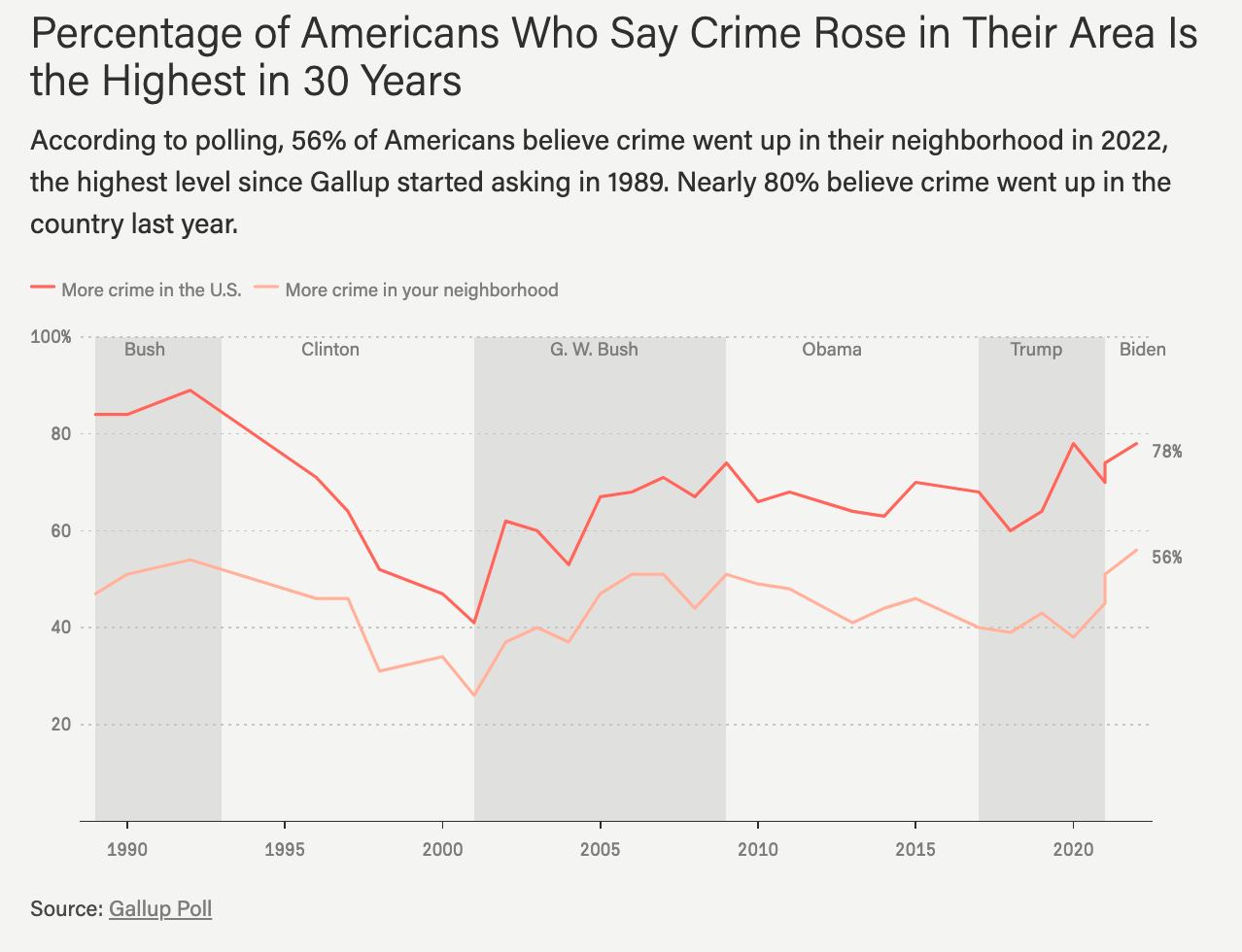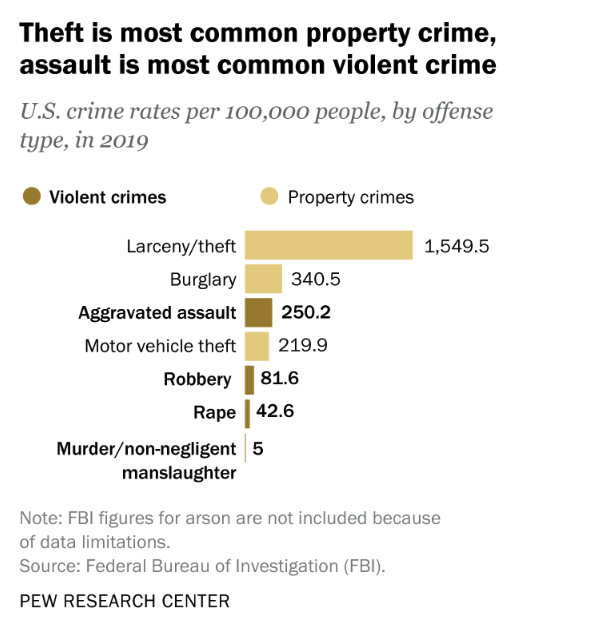
The Morning Meeting with Al Tompkins is a daily Poynter briefing of story ideas worth considering and other timely context for journalists, written by senior faculty Al Tompkins. Sign up here to have it delivered to your inbox every weekday morning.
In the retail world, shoplifting is referred to as “shrinkage” and this year, shrinkage is biting a chunk out of retailers’ hides.
Slate reports that stores are locking up all sorts of stuff that used to sit openly on shelves. It’s a reminder of a suggestion that Rite Aid’s executive vice president of retail, Andre Persaud, made a few months ago that maybe stores should be like a big vending machine and just put everything behind plexiglass to slow down thefts.
Many big-city pharmacy chains are halfway there, with plexiglass cases that have mushroomed over even low-priced household goods like shampoo and deodorant—to say nothing of laundry detergent, razor blades, and baby formula. It’s like shopping at a pharmacy 100 years ago, with a white-aproned clerk pushing around a ladder to grab your tinctures and tonics, except now it’s a minimum-wage cashier with a key ring. These days, you press a red button, and a loudspeaker tells the store that you have a foot fungus. In July, a Manhattan Duane Reade made international news when it placed a can of Spam—Spam!—in a theft-deterrent plastic case.
Slate lists a shopping-cart full of contributing factors for the rising shoplifting. The economy and inflation may be one reason, but so “blocked-up court systems letting the sticky-fingered go free, lenient district attorneys, new standards for felony charges, big city police work stoppages, the expectation that shoppers cover their nose and mouth like bank robbers.” And it is all taking a financial toll:
The plastic cases for merchandise have become a symbol of a society in decline, even if the precise shape of the problem isn’t exactly transparent. Shoplifting is definitely cutting into store margins. Rite Aid says the problem cost it $5 million last quarter in New York City; Walgreens claimed to have closed stores in San Francisco as a result. You can be skeptical of companies playing the blame game, but retail experts are certain: If shoplifting weren’t chipping into profits, you wouldn’t see plastic cases at all. “It’s a solution of last resort,” says Joe Budano, whose company sells the cases to retailers. “As soon as you lock something up, you’re going to see a 5 to 25 percent reduction in sales.” Big pharmacy is a data-driven business, and if enough product disappears from the store, that product goes in a case.
Shoplifting is such a big problem, that last week, when officials from Target were explaining why the company’s profit fell by 50% in the third quarter, they mentioned shoplifting as a contributing cause. Target Chief Growth Officer Christina Hennington said Target shoplifting has jumped about 50% year over year. Target estimates shoplifting has cost the retailer $400 million and most of that, Hennington said, has come from organized retail theft.
Kyle Iboshi an investigative reporter at KGW-TV in Portland, Oregon, explored the rising shoplifting rate in that city and said it is more than just shoplifting: “It is organized retail theft.” The station showed outrageous video of people wheeling out carts filled with stolen clothes, boldly walking out of a hardware store with hands filled with stolen power tools. One thief rolled a bike down a drugstore aisle, right past a security guard. Lots of thefts never get reported.
What’s the use? Some stores, the story said, lose more than a million dollars a year in goods. Some of the hot items are perfumes and expensive handbags. Often, stores are victimized daily and sometimes more than once a day. A local pastor whose window looks out on the local Nike store says he sees thieves running out of the store with their arms full of stolen stuff all the time. And the excellent KGW-TV story makes the point that this stolen stuff is not to feed hungry children. It is organized theft. The stuff gets sold online and in flea markets. This is a really compelling story that opens your eyes to the rampant thievery all around us that, eventually, you and I pay for.
People tell pollsters that crime is rising, but is it really rising?
Americans consistently say they believe crime is rising, even when it isn’t. And this is not new. Look at Gallup’s data mapped out by presidential term. The Marshall Project put the data into an easy-to-read chart.
Politicians running for the midterm elections often played on the “rising crime” narrative. Exit polls show that one in 10 voters in the midterm election said “crime” was their top concern. It was about the same number as those who said immigration or gun policy was their top concern.
But The Marshall Project tried to verify that crime is rising. It is exceedingly difficult to make a clear conclusion because of three questions criminologist Justin Nix says you have to consider:
- What do we mean by crime?
- What period of time are we comparing it to?
- What location are we talking about?
If you are just looking at the murder rate, you might come to one conclusion, but if you consider only violent crime you might come to a different conclusion, and if you want to consider all crimes the data shows a different image once again. The Marshall Project put it this way:
For example, in Atlanta, from 2020 to 2021, the number of murders went up by 3%, according to the Atlanta Police Department. But if we extend the comparison to 2019, before the pandemic, murders are up by 65%. Yet compared to 1990, murders in Atlanta are down by 32%, despite steady population growth. The city’s murder total in 2021 was also roughly the same as the annual tallies in the early 2000s.
Nationally, what we know from both FBI data reported by police, and from an annual federal survey that asks about 240,000 people whether they personally were victims of crime, is that violent and property crimes have both been on a steady decline since the early 1990s. Murders did increase at a troubling and dramatic rate nationwide in 2020, and have remained elevated, but murder is the least common form of violent crime. Overall, violent crime has remained roughly static since 2010, following decades of decline.
To that point, theft is the most common nonviolent crime in the U.S. and assault is the most common violent crime.
FiveThirtyEight.com says Americans are really bad at estimating their risk of being a crime victim:
Over 10 years, from 1994 to 2004, the national Survey of Economic Expectations asked respondents to do just that. People estimated their risks for a whole host of bad-news life events — robbery, burglary, job loss and losing their health insurance. But the survey didn’t just ask respondents to rate their chances: It also asked whether those things had actually happened to them in the last year.
And that combination of questions revealed something important about American fear: We are terrible at estimating our risk of crime — much worse than we are at guessing the danger of other bad things. Across that decade, respondents put their chance of being robbed in the coming year at about 15 percent. Looking back, the actual rate of robbery was 1.2 percent. In contrast, when asked to rate their risk of upcoming job loss, people guessed it was about 14.5 percent — much closer to the actual job loss rate of 12.9 percent.
In other words, we feel the risk of crime more acutely. We are certain crime is rising when it isn’t; convinced our risk of victimization is higher than it actually is.
Gallup’s data shows that Americans have overestimated the crime rate for decades:
In 20 of 24 Gallup surveys conducted since 1993, at least 60% of U.S. adults have said there is more crime nationally than there was the year before, despite the generally downward trend nationally in violent and property crime rates during most of that period.
And Gallup reminds us that even the data that we do get is not very accurate because so many crimes are not reported:
Around eight-in-ten motor vehicle thefts (79.5%) were reported to police in 2019, making it by far the most commonly reported property crime tracked by BJS. Around half (48.5%) of household burglary and trespassing offenses were reported, as were 30% of personal thefts/larcenies and 26.8% of household thefts.
Among violent crimes, aggravated assault was the most likely to be reported to law enforcement (52.1%). It was followed by robbery (46.6%), simple assault (37.9%) and rape/sexual assault (33.9%).
I hope that this will remind us to be thoughtful when we talk with people who express crime fears. Put those concerns in context.
How to keep awkward Thanksgiving conversations to a minimum
In recent years, the awkward Thanksgiving conversations may have centered around politics. Perhaps that will have toned down a little this year? I know people who have avoided recent gatherings just to avoid the nastiness that comes with some family gatherings.
KSAT offers some topics that really don’t go well at Thanksgiving gatherings:
1. Avoid talking about the election and politics. Politics is a sensitive subject, and get can offensive, even if that’s not what you intended.
2. Don’t talk about the money a family member still owes you. Money is a touchy subject, and a holiday meal is not the place to have that conversation.
3. Try to not talk about a relative’s family planning. Whether you’re speculating on when they’ll start their family, or asking when they’ll have another baby, you’re putting them in an uncomfortable situation. Experts say if they want anyone to know, they will bring it up themselves.
4. Don’t ask a family member why they’re still single.
Girlboss.com also posted some useful “redirections” if you get cornered by a pushy relative about your personal life.
Around the holidays, people who have lost a loved one may feel it more intensely. Holiday gathering remind them of family traditions. When I see canned cranberry sauce and see Stovetop stuffing, I think of my mother, who was more practical than gourmet. Here is a website that might help people navigate the emotional rough spots.
Realsimple.com has a list of conversation starters that might be good diversions if things start going badly.










